
Navy Bandsman explores Gallipoli history through musical predecessor
23 April 2024
Unfortunately you are viewing this website on an outdated browser which does not support the necessary features for us to provide an adequate experience. Please switch to a modern browser such as latest version of Google Chrome, Mozilla Firefox, Apple Safari or Microsoft Edge.
Ngā mihi nui
Whakaari / White Island
At 2.11pm, Monday, 9 December 2019 there were 47 people on Whakaari/White Island. Tourists and guides are caught up in the explosive event, with no easy escape available.
Within minutes
Our personnel at Headquarters Joint Forces New Zealand (HQJFNZ) in Trentham start to build a picture of the problem and determine what assets and personnel can be deployed to support the recovery effort. Reports are coming in around the number of people killed or seriously injured. A Royal New Zealand Air Force P-3K2 Orion aircraft and crew is diverted from a task surveying flooding on the West Coast of the South Island to turn and fly north to carry out surveillance and reconnaissance over Whakaari/White Island to gather imagery and information.
Within hours
Two NH90 helicopters with a dedicated team of casualty evacuation (CASEVAC) medical specialists on board fly from Ōhakea to Whakatāne. Patients are being transported to burns units in hospitals around the country.
NH90 helicopters transport patients to burn units in hospitals around the country.
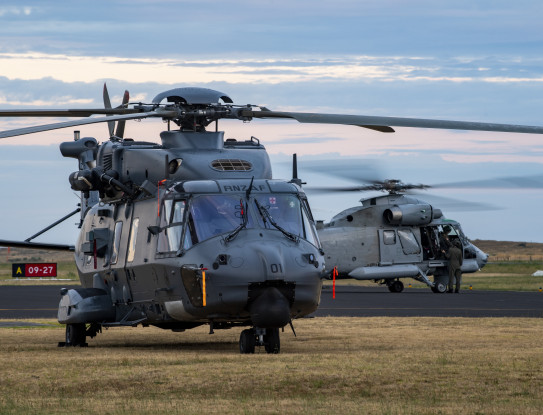
White Island recovery
The aircraft sits on the ground with engines running, waiting for critically injured people to be stabilised, and in some cases decontaminated, before being loaded aboard the NH90 helicopters for the 400 kilometre, 1 hour 40 minute flight down to Wellington. Just after midnight the two NH90 helicopters land at Trentham Military Camp carrying four seriously injured patients.
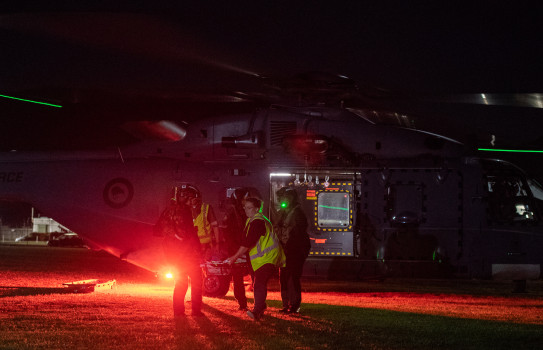
As soon as word of the eruption comes through HMNZS Wellington in Auckland is made ready to go to sea. Once its helicopter is embarked, the ship ‘sprints’ at 22 knots for White Island. Two additional Seasprite helicopters are used throughout the week for surveillance and reconnaissance of the island, VIP and command and control transport, and for the transfers of passengers and equipment to the ship. The Seasprite helicopters also have the sombre task of moving those who were tragically killed in the eruption back to Whakatāne airport. HMNZS Wellington becomes the key platform from which operations onto the island are conducted and controlled.
Two Disaster Victim Identification (DVI) teams are drawn from across NZDF and a Mortuary Affairs Team from 1 (NZ) Brigade is requested by New Zealand Police and are rapidly dispatched to support the overloaded civil authorities in Auckland and Whakatāne respectively.
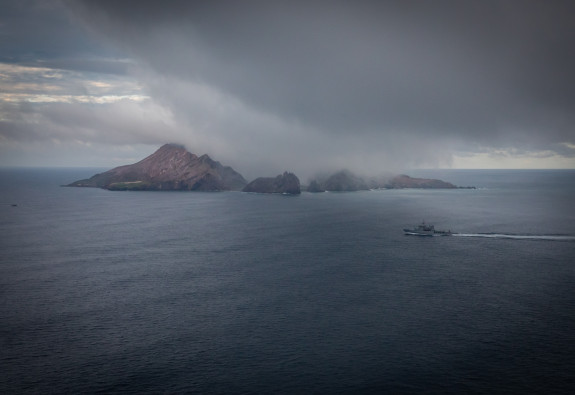
HMNZS Wellington off the coast of Whaakari/White Island
Imagery from a P-3K2 Orion aircraft surveillance flight arrives in the early hours of Tuesday and the Air Force team at 230 Squadron and later the Joint Intelligence Fusion Centre (JIFC) analyse the images, determining the likely locations of up to eight victims that remain on the island.
As the sun rises on Tuesday morning the scope and scale of the tragedy becomes clear. There are multiple units throughout our Defence Force preparing to move and one of these is a group of specialists from E Squadron of the SAS Regiment.
By late Wednesday information emerges on the nature of the toxicity on Whakaari/White Island and it becomes clear that it is within the EOD Squadron’s capacity to undertake a recovery mission once the eruption risk is at an acceptable level.
Information about toxicity on the island emerges.
Our elite Littoral Warfare Team from HMNZS Matataua, made up of diving and hydrographic specialists, forward deploy into the Bay of Plenty area complete with Autonomous Underwater Vehicle (AUV) and recompression chamber. By Wednesday the AUV is transported onto HMNZS Wellington and is conducting underwater searches of White Island.
Friday
Starting Thursday evening and stretching into the early hours of Friday morning, Rigid Hulled Inflatable Boats (RHIBs) are used to pre-position the Explosive Ordnance Disposal (EOD) Squadron Recovery Team, a decontamination team and medical specialists, from Whakatāne onto HMNZS Wellington.
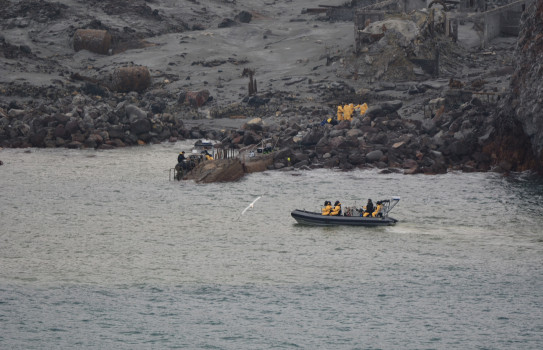
White Island recovery
At around 0700 on Friday 13 December HMNZS Wellington's two RHIBs are lowered into the water and recovery team stores are moved onto the landing at White Island. By 0734 the recovery teams have landed on the island and they start dragging their equipment on sleds and on their backs toward the known locations of the people killed in the eruption. The RHIBS have medical staff on board wearing environmental suits and once the recovery team has been dropped off, the RHIBs back off the jetty and wait to be called forward if needed.
The recovery team reaches the victims and start working in deep, sticky, toxic sludge to move them one by one to a suitable point for helicopter uplift. After 90 minutes, the recovery team members are exhausted and return to the landing to regroup, rehydrate and cool off. They make a deliberate decision to not give up and push through and achieve the mission. Throughout the mission a Seasprite helicopter circles overhead and as it runs low on fuel a second Seasprite arrives from Whakatane to assume the over-watch role. A pair of NH90 helicopters lift off from Whakatane Airport and fly out to White Island where they enter a holding pattern as the ground recovery team completes their work. Finally word comes through that the recovery team has completed their work and the NH90 helicopters move in, taking two trips to move the victims onto HMNZS Wellington. Back on the island, the recovery team spends the remainder of their limited time searching for another two missing since the eruption - regrettably to no avail.
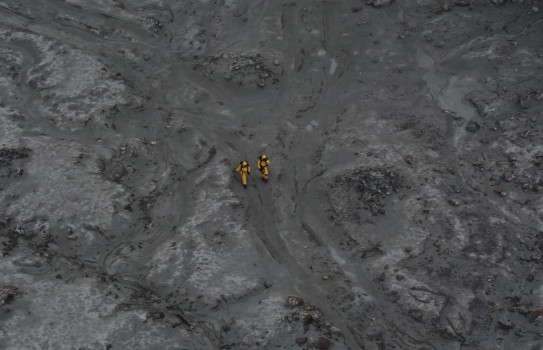
White Island recovery
Two Seasprite helicopters begin the process of moving the victims, one at a time, back to Whakatāne airport. Finally the victims are reunited with their families and after some shared grieving, the bodies are loaded into two NH90 helicopters to be moved to Auckland where the DVI teams go to work.
The risks were very real. One of the go/no-go criteria for recovery was that there needed to be a 6 percent or less chance of death at the task site if an eruption were to occur in a three-hour window. At the time, GNS were saying there was a 40-60 percent chance of another eruption in a 24-hour period.
Despite all of the risks and challenges, the Defence Force personnel and capabilities involved are able to overcome those issues, making a difference to alleviate the suffering of victims, their families and friends.
A career in the Defence Force is unlike anything out there. You’ll work as part of a tight-knit team, trained and ready to assist in times of disaster or provide humanitarian aid to those in need. And you’ll have the honour of representing the New Zealand way of life wherever you go. It’s an incredibly rewarding job that gives you a real sense of purpose.
Find out moreOur other areas of work